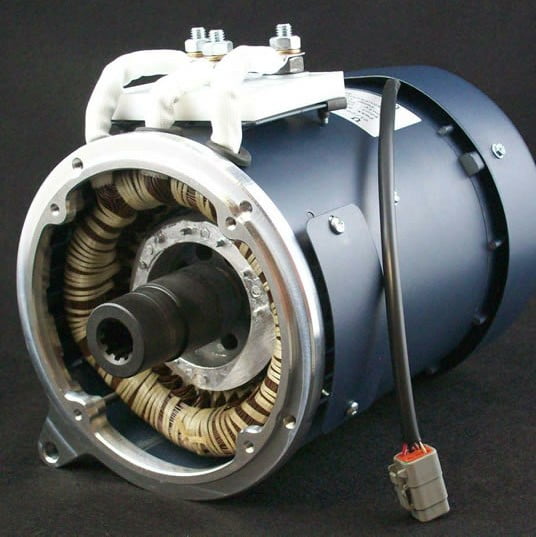We are back with another article related to one of the most popular technologies from the field of automobile engineering in recent times. The trend and application of electric motors in electric vehicles have been a relatively recent development in automobile technology. While there have been multiple examples of various electronic components being used in a vehicle for many decades, the complete electric operation of a car without the traditional Internal Combustion Engine is completely modern and future-oriented. We have barely scratched the surface with this technology and there is a long way to go before it becomes mass adopted. So, let us try to understand the working of an electric motor in an electric car in simple terms for better understanding, which is always the aim of these articles. Make sure to follow Car Blog India for the latest news from the world of the automobile industry and the Automobile Technolgy Section for various technical articles in simple terms.
Also read: Working of Roots, Twin-Screw, Centrifugal Superchargers!

Electric Motors
As is clear from the description of an electric car, it used some sort of electric power to generate the torque and power output to propel the car forward and enable motion in a car. Traditionally, this was done by the internal combustion engine which required fuel to have enough energy to rotate the wheels of the car and overcome the resistive forces to the motion. So, the function of the electric motor is similar but the application is completely different in terms of everything. This includes the various components of the electric motor, weight of the overall setup, location of the motor in the vehicle, driving dynamics, power and torque delivery, noise, vibrations, harshness, charging the car among other things.
Also read: Working of Hydraulic, Electric, Electrohydraulic Power Steerings!
Pros and Cons of EVs
Expanding upon the abovementioned characteristics of an EV, we can observe that an electric motor weighs way less than the traditional IC engine. For instance, a regular IC Engine might weigh around 180 kg compared to a regular Induction Electric Motor, which might be around 35 kg. Also, the lighter electric motor will most likely make twice as much power as the regular IC engine. Therefore, the power to weight ratio difference between the two power sources is quite significant. Secondly, an electric motor requires a large battery pack which is fitted at the bottom of the car. This means that a significant weight of the car is well spread out at the bottom improving to lower the center of gravity of an electric car. This enhances the stability of the car greatly and in turn, improves the driveability and handling of the car massively.
Thirdly, the power and torque are available instantly because it all depends on electric impulses. It doesn’t take any time to alter and control the electric power input and the response is immediate. There is no lag, which is why the electric cars can clock impressive 0-100 kmph timings. The passengers also don’t have to deal with the roaring and thundering sounds of an engine as EVs operate silently as there are literally no moving parts. Although, the big negatives of the EVs would have to be the long charging times and high costs. One always has range anxiety if the car will run out of charge during the journey. Let us take a look at the two most prominent types of electric motors used in EVs today.
Also read: Camshafts and Valves – Working and Classification!
Induction Motor or Asynchronous Motor
The Induction Motor is a very powerful and sophisticated kind of power source used in electric cars. The induction motor was developed almost a century ago and has been used in various fields. Essentially, it consists of a rotor and a stator. The stator receives electric current input from the battery and a rotating magnetic field is set up around the stator. This induces the current into the rotor as well which makes it rotate. The rotor is directly connected to the transmission, which is generally a single gear transmission setup. This directly causes the wheels to move. Another important componetn of this setup is an inverter. The DC current from the battery has to converted to AC current as an input to the motor. Also, the inverter is the component that alternates the AC power frequency to enable the varying speeds of the wheels. This is what helps make an EV an all-wheel drive or just manage the traction control in a better way. For example, Tesla used various wheel and car speed sensors and various inputs to discover that the wheel is slipping or one tyre doesn’t have enough traction and either applies the brake to that wheel or cuts the power supply to that wheel. Being electric in nature, the responses of the traction control system are quick.
Also read: What is EGR (Exhaust Gas Recirculation) – Working and Advantages!
Permanent Synchronous Magnet Motors
In such types of motors, there is a magnet either embedded into the rotor or placed on the surface of the rotor. A magnetic field is generated and the rotation causes the vehicle to move. In this case, however, the speed of the rotating magnetic field is similar to that of the speed of the rotor, which is why it is known as a synchronous motor. Depending on the placement of the magnets, these are divided into Interior Permanent Magnet Motor or Surface Permanent Magnet Motor. These are the two most frequently used electric motors in cars due to their robustness, high efficiency, power and relatively simple technology. There are other motors as well like the Reluctance Motors which are used in EVs around the world as well like the two wheels, three-wheels or ELectric Buses, etc.
Also read: Uses of 48V hybrid system – Regenerative Braking, Turbo Boost, Fuel Economy and more!
Image Source: Electric Motorsport

